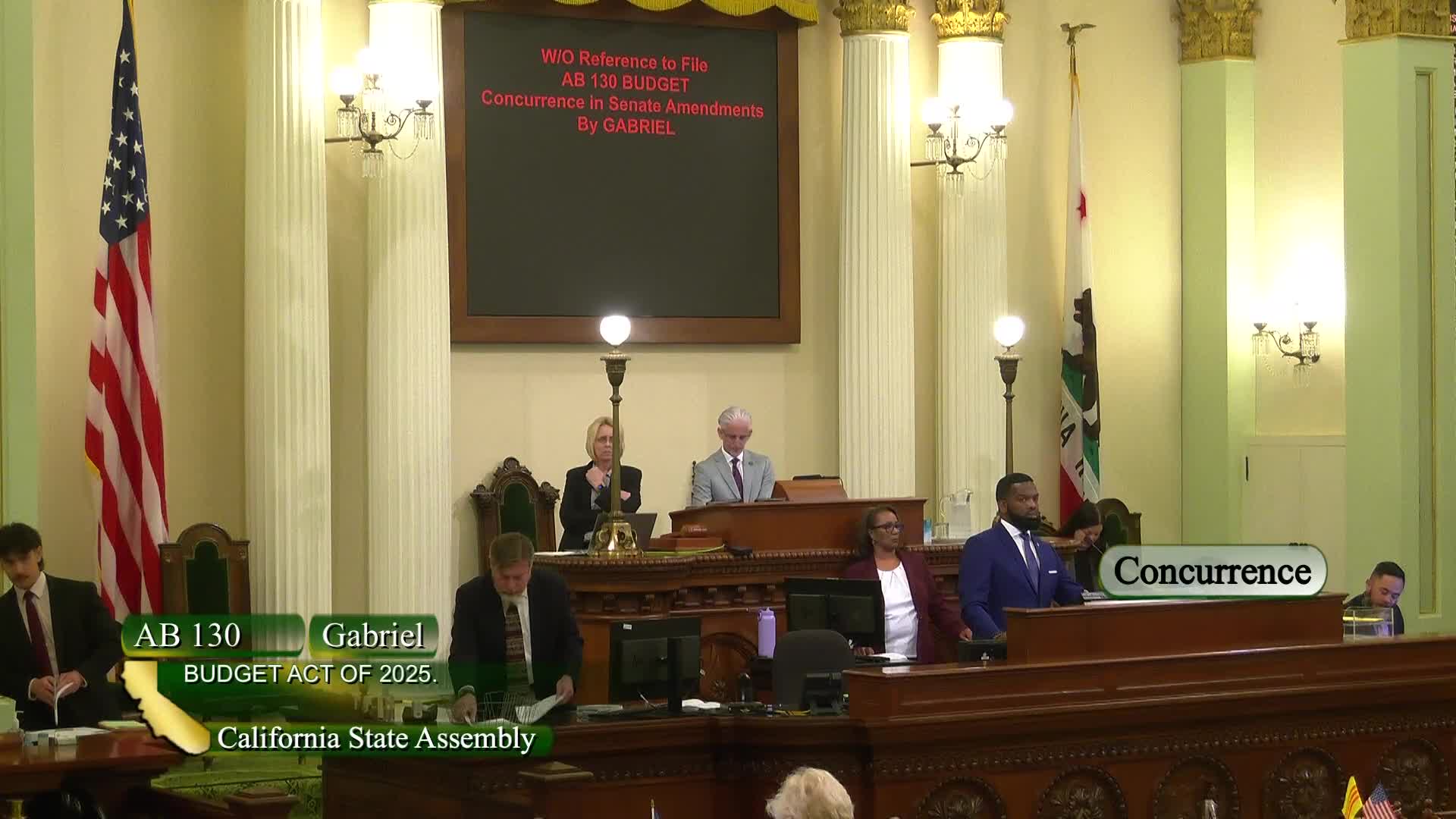California Assembly passes AB 130 to reform housing development and CEQA regulations
June 30, 2025 | California State Assembly, House, Legislative, California
This article was created by AI summarizing key points discussed. AI makes mistakes, so for full details and context, please refer to the video of the full meeting. Please report any errors so we can fix them. Report an error »

Assembly Bill 130, a pivotal piece of legislation aimed at addressing California's housing crisis, garnered significant attention during the recent Assembly Floor Session. The bill, which focuses on streamlining housing projects of 20 acres or less, introduces crucial protections for tribal cultural resources, marking a notable shift in how such projects are managed in the state.
Assemblymember Ramos highlighted the importance of the bill, stating that it includes enhanced consultation processes with California Native American tribes. Under the new provisions, tribes will receive notifications about projects affecting their cultural resources and will have 60 days to respond, a significant increase from the previous 30-day requirement. This change aims to ensure that tribal knowledge and customs are respected during project consultations, a step forward in protecting indigenous interests.
Despite the positive strides, the bill faced opposition. Assemblymember DeMaio criticized the legislation for continuing to impose costs on housing projects through prevailing wage requirements, arguing that this could negate the intended benefits of reducing regulatory burdens. He called for a more comprehensive overhaul of the California Environmental Quality Act (CEQA), suggesting that the current reforms do not go far enough to alleviate the housing crisis.
Supporters of AB 130, including Assemblymembers Rubio and Haney, emphasized the urgency of addressing California's housing shortage, which has left many families struggling to afford homes. They argued that the bill represents a significant step toward making housing more accessible and affordable, particularly for working-class families.
As the Assembly debated the bill, the overarching theme was clear: California's housing crisis requires bold action and collaboration across party lines. With AB 130, lawmakers hope to not only streamline housing development but also ensure that the voices of tribal communities are heard and respected in the process. The bill's passage could signal a turning point in California's approach to housing, potentially reshaping the landscape for future developments.
Assemblymember Ramos highlighted the importance of the bill, stating that it includes enhanced consultation processes with California Native American tribes. Under the new provisions, tribes will receive notifications about projects affecting their cultural resources and will have 60 days to respond, a significant increase from the previous 30-day requirement. This change aims to ensure that tribal knowledge and customs are respected during project consultations, a step forward in protecting indigenous interests.
Despite the positive strides, the bill faced opposition. Assemblymember DeMaio criticized the legislation for continuing to impose costs on housing projects through prevailing wage requirements, arguing that this could negate the intended benefits of reducing regulatory burdens. He called for a more comprehensive overhaul of the California Environmental Quality Act (CEQA), suggesting that the current reforms do not go far enough to alleviate the housing crisis.
Supporters of AB 130, including Assemblymembers Rubio and Haney, emphasized the urgency of addressing California's housing shortage, which has left many families struggling to afford homes. They argued that the bill represents a significant step toward making housing more accessible and affordable, particularly for working-class families.
As the Assembly debated the bill, the overarching theme was clear: California's housing crisis requires bold action and collaboration across party lines. With AB 130, lawmakers hope to not only streamline housing development but also ensure that the voices of tribal communities are heard and respected in the process. The bill's passage could signal a turning point in California's approach to housing, potentially reshaping the landscape for future developments.
View full meeting
This article is based on a recent meeting—watch the full video and explore the complete transcript for deeper insights into the discussion.
View full meeting
